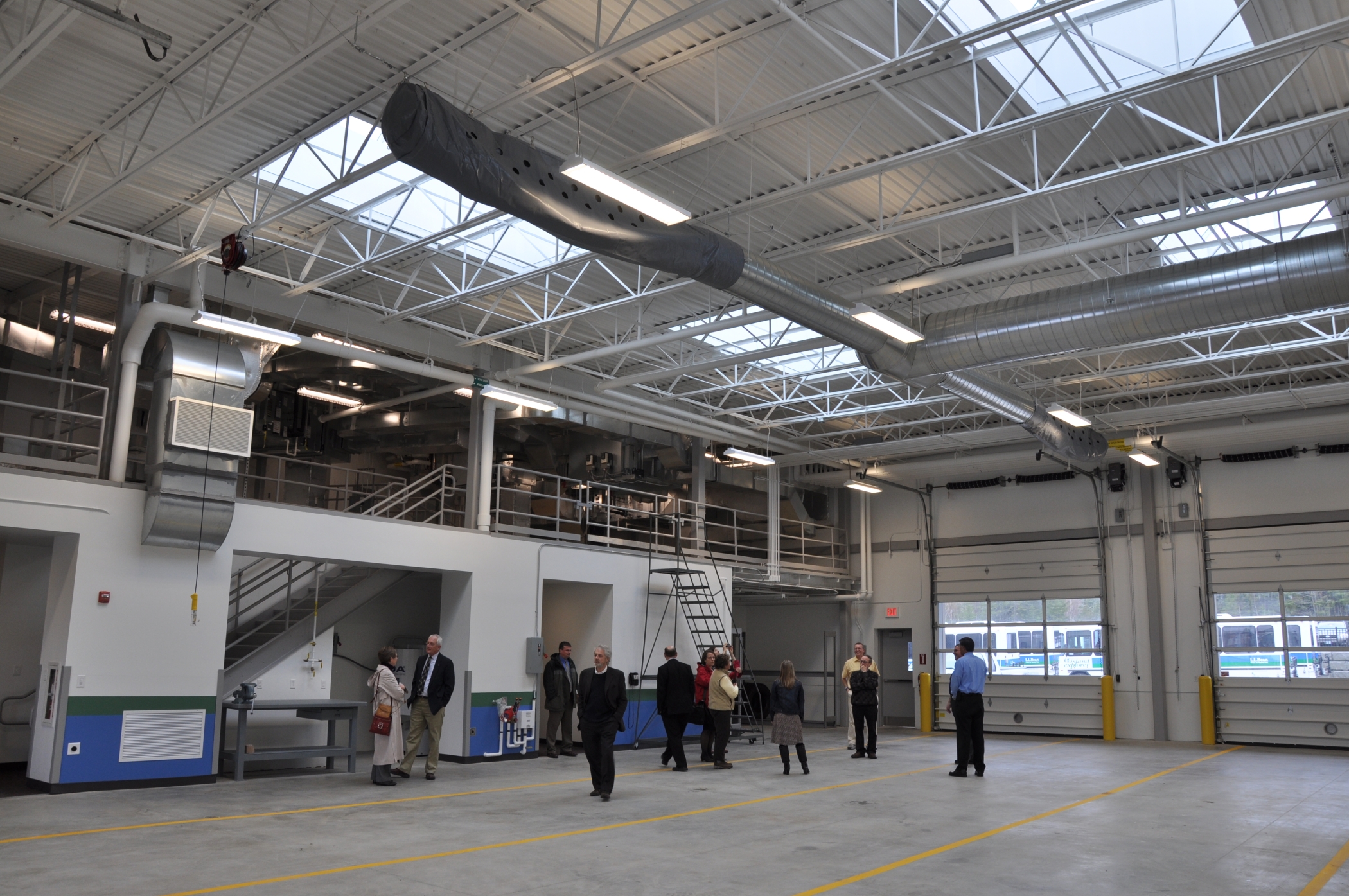Thornton Tomasetti announced that the Acadia Gateway Center administrative and maintenance facility has received LEED Gold Certification. Fore Solutions, the green building consulting company acquired by Thornton Tomasetti in 2012, provided LEED consulting services for the project located in Trenton, Maine at the gateway to Acadia National Park, one of the most visited national parks in the United States.
Fore Solutions was hired by the mechanical engineer on this project, Allied Engineering in Portland Maine, to provide LEED consulting. In this role, Fore Solutions reviewed the energy model, tracked compliance with LEED throughout design and construction and reviewed and submitted LEED documentation to the Green Building Certification Institute.
The Acadia Gateway Center administrative and maintenance facility is the first phase of a multi-phased project to implement a Transportation Demand Management Plan for Acadia National Park in order to reduce automobile traffic on Mount Desert Island. Phase I of the project consists of a 22,000-square-foot center located on Route 3 in Trenton, Maine that will function first as a bus maintenance and storage facility for the seasonal Island Explorer bus system and as a summertime park-and-ride parking lot for people who want to ride the propane-powered buses onto Mount Desert Island.
The second phase will include a visitor center and intermodal facility for the Island Explorer bus service.
Key points:
- This $14.7-million facility was funded through a combination of federal and state sources, including $11.6 million from the Federal Transit Administration.
- The Acadia Gateway Center is anticipated to reduce more than 10 million vehicle miles per year with the Island Explorer buses. Local bus routes will stop at the park and ride on-site to connect building visitors and staff to the surrounding area. Preferred parking for fuel-efficient vehicles is being provided for employees and visitors.
- Water used to wash buses is collected, filtered and reused – reducing water demand by 88%. No irrigation will be used on-site and temporary irrigation will only be provided for one year.
- The project demonstrates a 38.3% improvement in the building performance rating compared to the baseline building performance in ASHRAE-90.1-2004. Energy efficiency measures include an improved thermal envelope, high-efficiency glazing, reduced interior lighting power density and high-efficiency HVAC systems.
- Solar collectors are being used on the project to pre-heat domestic water for the domestic hot water system. Roof materials with a high SRI (Solar Reflectance Index) value have been installed on the roof.
- Materials with recycled content and local materials were used in the project wherever possible, and 70% of construction waste was diverted from landfills.
- Low-emitting adhesives, sealants, paints, carpet and composite wood materials are being used in the project.
- Accessible temperature and lighting controls have been installed for building occupants. +
Related Stories
| May 25, 2011
Developers push Manhattan office construction
Manhattan developers are planning the city's biggest decade of office construction since the 1980s, betting on rising demand for modern space even with tenants unsigned and the availability of financing more limited. More than 25 million sf of projects are under construction or may be built in the next nine years.
| May 25, 2011
Olympic site spurs green building movement in UK
London's environmentally friendly 2012 Olympic venues are fuelling a green building movement in Britain.
| May 25, 2011
TOTO tests universal design at the AIA conference
If you could be 80 years old for 30 minutes—and have to readjust everything you think you know about your own mobility—would you do it?
| May 20, 2011
Hotels taking bath out of the bathroom
Bathtubs are disappearing from many hotels across the country as chains use the freed-up space to install ever more luxurious showers, according to a recent USAToday report. Of course, we reported on this move--and 6 other hospitality trends--back in 2006 in our special report "The Inn Things: Seven Radical New Trends in Hotel Design."
| May 19, 2011
BD+C’s "40 Under 40" winners for 2011
The 40 individuals profiled here are some of the brightest stars in the AEC universe—and they’re under the age of 40. These young architects, engineers, contractors, designers, and developers stood out among a group of 164 outstanding entrants in our sixth annual “40 Under 40” competition.
| May 18, 2011
Sanford E. Garner on the profitability of being diverse
Sanford E. Garner, AIA, NOMA, LEED AP ND, NCARB, founding partner and president of A2SO4 Architecture, LLC, Indianapolis, on gentrification, the profitability of being diverse, and his goals as NOMA president.
| May 18, 2011
8 Tips for Designing Wood Trusses
Successful metal-plate-connected wood truss projects require careful attention to detail from Building Team members.
| May 18, 2011
Major Trends in University Residence Halls
They’re not ‘dorms’ anymore. Today’s collegiate housing facilities are lively, state-of-the-art, and green—and a growing sector for Building Teams to explore.
| May 18, 2011
Former Bronx railyard redeveloped as shared education campus
Four schools find strength in numbers at the new 2,310-student Mott Haven Campus in New York City. The schools—three high schools and a K-4 elementary school—coexist on the 6.5-acre South Bronx campus, which was once a railyard.
















